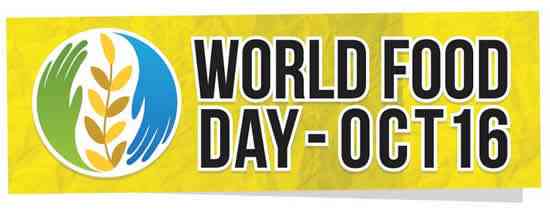With 1/7 of the world’s population, or 868 million people, hungry, and the global population expected to reach 9 billion by 2050, the oft asked question is: “How will we feed the world?” The Food and Agriculture Organization (FAO) maintains that securing global food security and improving the health of populations will be dependent on the cultivation of sustainable food systems. But as Mark Bittman writes in his recent New York Times op-ed, this question “implies that we have no choice but to intensify industrial agriculture, with more high-tech seeds, chemicals and collateral damage. Yet there are other, better options.”
So in honor of World Food Day, a day dedicated to the global movement to end hunger, we’re highlighting five innovative information technologies that are helping farmers feed themselves and the world in a more sustainable, equitable and profitable way.
M-Farm
Created by MFarm, M-Farm, is a transparency tool for Kenyan farmers. Because many farmers still do not have access to the Internet, the tool leverages SMS-technology and only requires farmers to text #20255 to receive pricing information on their products. The tool also allows them to buy their farm inputs directly from manufacturers and find buyers for their produce. World-wide, farmer face obstacles in terms of productivity and personal livelihood. Middlemen often offer meager prices for their produce, which they do not have the knowledge to combat. But M-Farm gives a voice to farmers by providing them access to favorable market prices and allowing them to connect with other farmers to sell their products collectively.
Plantwise
Plantwise aims to improve food security by reducing crop losses by collecting, organizing and disseminating critical knowledge about plant health. Its goal is to help smallholder farmers and researchers minimize the spread of pests and disease by detecting plant health problems earlier and providing better recommendations for treatment. It operates a network of physical plant clinics and offers diagnosis and treatment support information as well as practical on the ground training for potential plant doctors through its online Knowledge Bank.
Digital Green
Digital Green seeks to improve food security and alleviate rural poverty by disseminating targeted agricultural information to small and marginal farmers in India through digital video. The company’s technology, COCO, captures local agricultural knowledge, techniques and best practices from farmers and extension agents through video production. DVDs of these videos are distributed to local mediators who organize screenings, facilitate discussion and answer questions. The technology differentiates itself from others, because it is able to operate offline, without the browser being interrupted, and only requires Internet connectivity when a user is ready to sync their data with the the company’s global database.
Seedmap
An online portal for seeds and biodiversity, Seedmap, aims to empower people with knowledge to help save biodiversity before it’s too late. Our planet lost 75 percent of its plant genetic diversity between 1900 and 2000 , and 75 percent of our food today is derived from only 12 plant and 5 animal species, according to its site. This irreparable loss has far-reaching impact on our global food security. Seedmap hopes to combat this loss for future generations through its interactive map that lets users view case studies on biodiversity from around the globe, which are broken into three themes: food diversity, threats and solutions. The map is designed to help people learn about threats to food security and those who are trying to safeguard it.
Feedie
A project of The Lunchbox Fund, a non-profit organization dedicated to providing a daily meal for disadvantaged and at-risk schoolchildren in South Africa, the Feedie app transforms your food photos into real food for children. When you snap a photo of your dish with the Feedie app at participating restaurants, the restaurant makes a monetary donation equal to one meal to The Lunchbox Fund. Using the free app, you can locate nearby restaurants who have partnered with Feedie. So far the app works at 39 restaurants in NYC only, including esteemed outposts like La Esquina, a handful of Mario Batali’s eateries and The Breslin.




